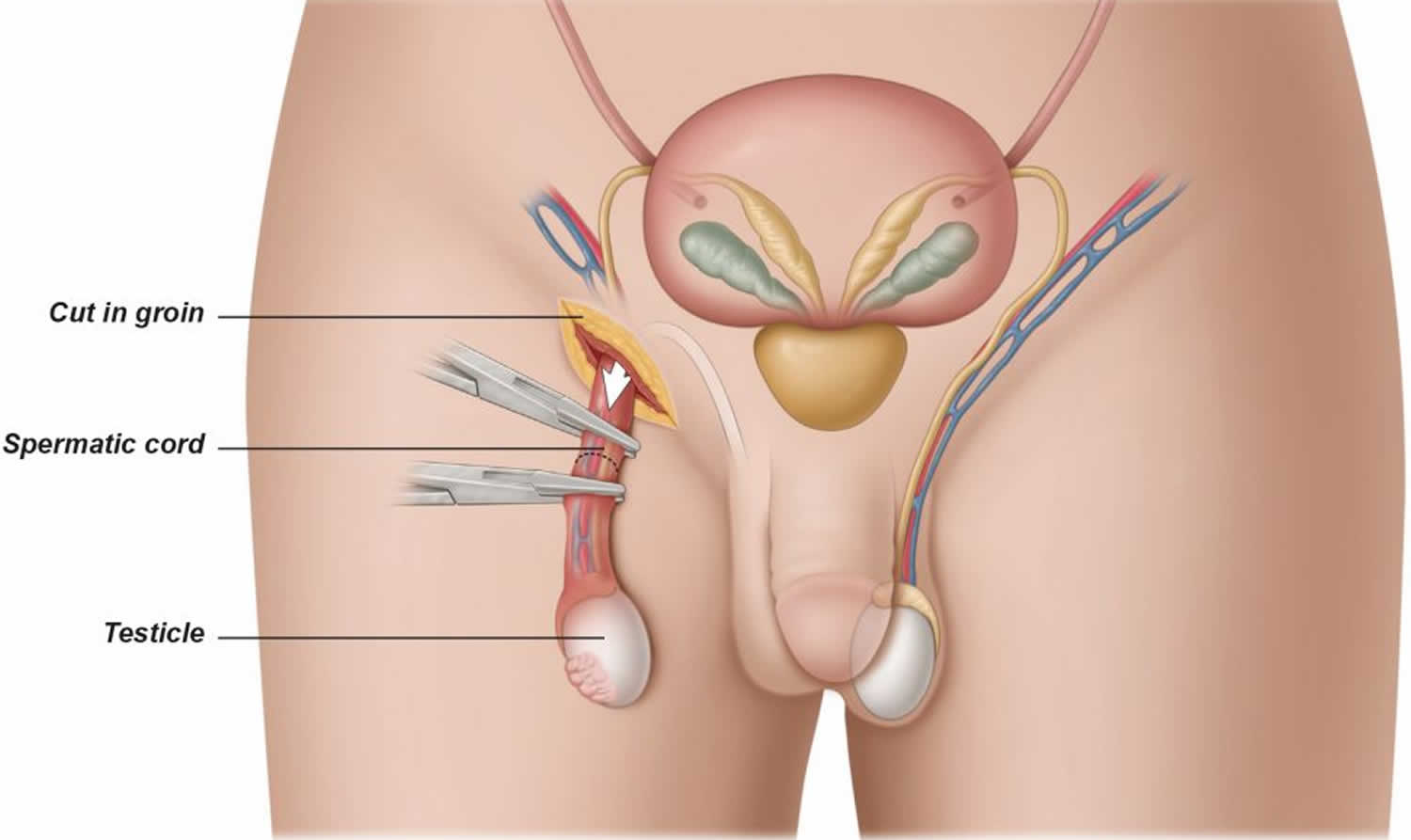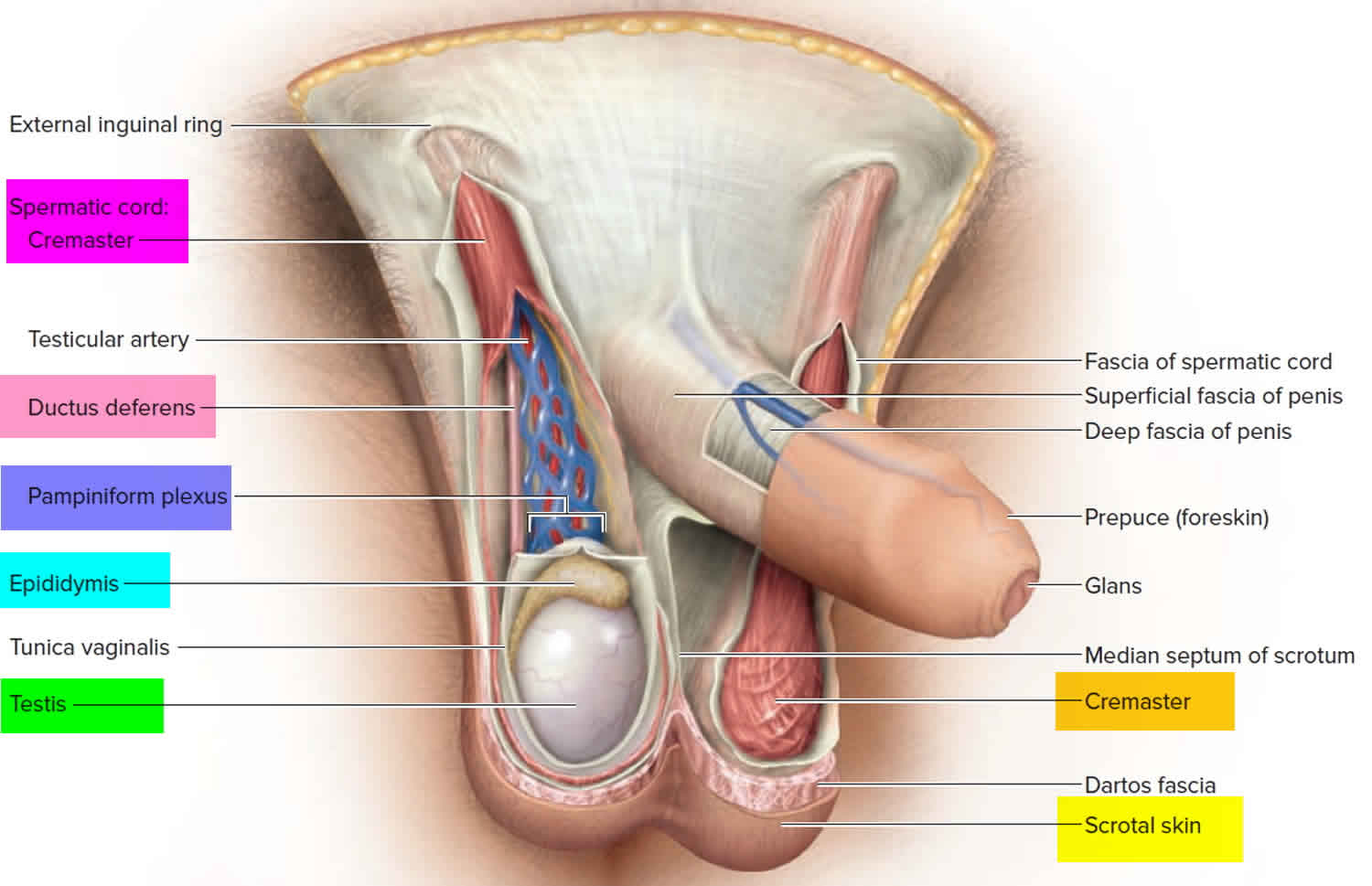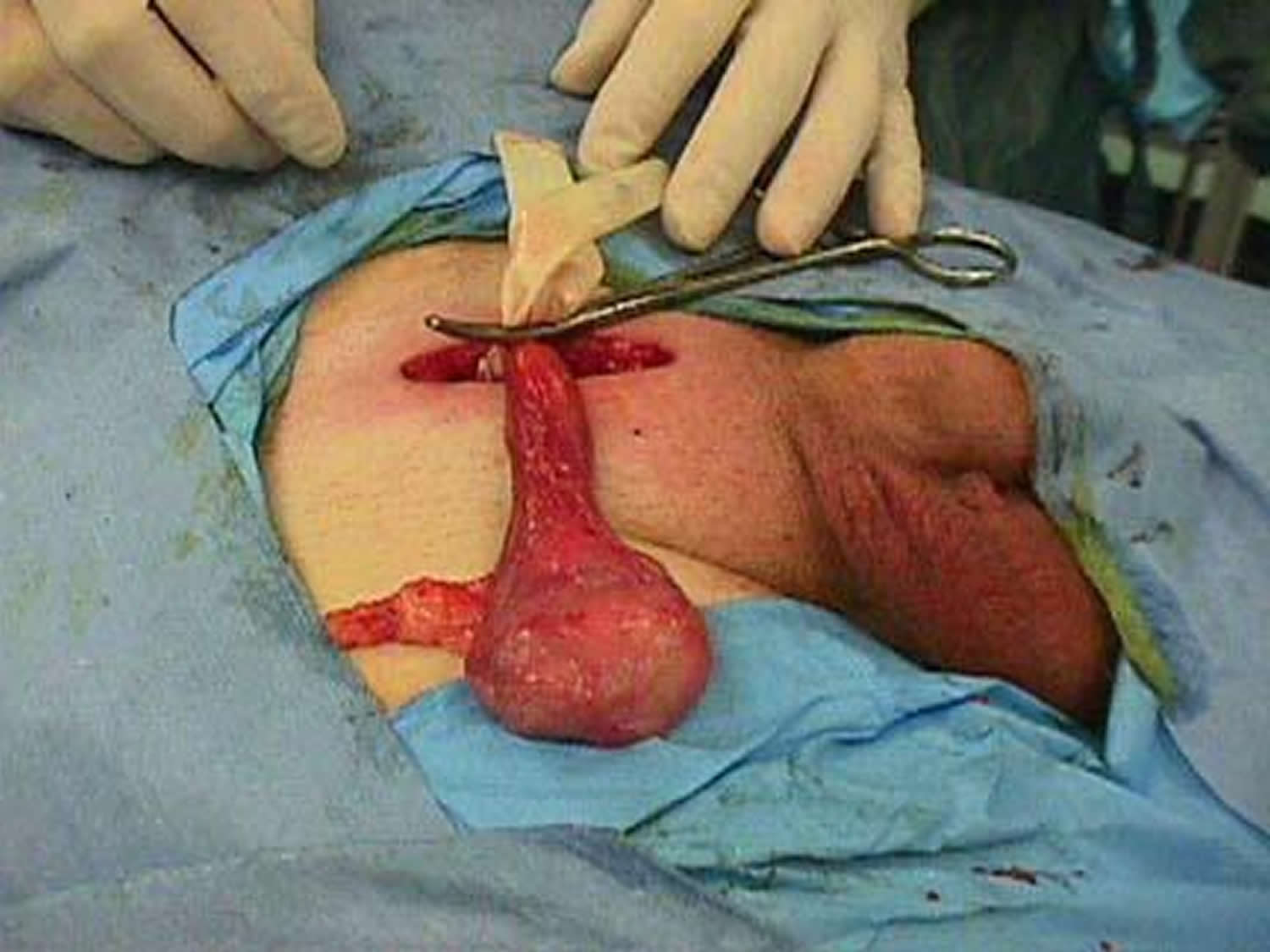Contents
What is orchiectomy
Orchiectomy is a surgical procedure to remove one or both testicles. If only one testicle is removed, this is known as unilateral orchiectomy. If both testicles are removed this is referred to as bilateral orchiectomy.
If you have testicular cancer, the whole of the affected testicle will need to be removed because only removing the tumor may lead to the cancer spreading.
By removing the entire testicle, your chances of making a full recovery are greatly improved. Your sex life and ability to father children won’t be affected.
About one in 50 people will get a second new testicular cancer in their remaining testicle. In such circumstances, it’s sometimes possible to only remove the part of the testicle containing the tumor. You should ask your surgeon about this if you’re in this position.
If testicular cancer is detected in its very early stages, an orchidectomy may be the only treatment you require.
A cut is made in the groin so the doctor can look at the testicle. Tissue may be taken to confirm the diagnosis and stage. If cancer is found, the whole testicle will be removed (orchiectomy) (Figure 1). Sometimes a false testicle (silicone implant) can be inserted for a more natural look and feel.
All testicular cancers are treated with surgery, with very few exceptions:
- An incision is made in the groin so the doctor can look at the testicle.
- Tissue may be taken to confirm the diagnosis and stage.
- If cancer is found, the whole testicle will be removed.
- Sometimes a false testicle (silicone implant) can be inserted for a more natural look and feel.
There are usually few complications with removal of the testicle. You might have bleeding or an infection after surgery. In the long term, you might have poor semen quality or low testosterone. This can affect your ability to father children.
Tell your doctor before orchiectomy if you wish to have children after treatment. Most men can become fathers even after treatment for testicular cancer. However, you should be offered semen analysis and cryopreservation of sperm (freezing deposits of sperm samples in a sperm bank) as options.
Figure 1. Orchiectomy
Figure 2. Testicles and scrotum anatomy
Inguinal orchiectomy
An orchidectomy isn’t carried out through the scrotum. Orchidectomy done by making an incision in your groin through which the testicle is removed with all of the tubes and blood vessels attached to the testicle that pass through the groin into the abdomen. The operation is carried out under general anaesthetic.
The actual testicle removal is done by making about a 4 inch incision along the “bikini line” through the lower abdomen on the side in question–they will not cut through the scrotal sack whatsoever. Once the incision has been made, the surgeon pushes the testicle up through the pelvic region and out it comes. A snip here, a stitch there, and you’re done before you know it.
You can have an artificial (prosthetic) testicle inserted into your scrotum so that the appearance of your testicles isn’t greatly affected. The artificial testicle is usually made of silicone (a soft type of plastic). It probably won’t be exactly like your old testicle or the one you still have. It may be slightly different in size or texture.
Average time on the operating table is about 45 minutes to an hour, but you should probably expect to stay in the hospital at least overnight. This operation is very simple and should not require any special expertise on the part of the surgeon. Note that while some men do stay overnight, most guys go home the same day (particularly in the USA). There is no problem with this, just make sure you get some pain killers before you leave the hospital, just in case…
They will probably wake you up pretty soon afterwards and encourage you to get up and try to walk. It will hurt, but it will also get your insides working faster and get you out of the hospital sooner. You’ll probably have a reasonable amount of pain at the incision, and you might want to consider wearing sweatpants for a week or two. There may also be numbness of the skin around the incision, but that should eventually go away.
In any event, the orchiectomy is a fairly simple but necessary operation in your initial stage of the testicular cancer experience. You will be “back to normal” fairly soon afterwards, although it has been said once you have had cancer, you’re life will never be the same again. Listen to your doctor’s post-op instructions, and read up on as much as you can so you’re involved in the management of your disease.
Radical inguinal orchiectomy
Surgery to remove a testicle with cancer is called a radical inguinal orchiectomy. An incision (cut) is made just above the pubic area, and the testicle is gently removed from the scrotum through the opening. The surgeon then removes the entire tumor along with the testicle and spermatic cord. The spermatic cord contains part of the vas deferens, as well as blood and lymph vessels that could act as pathways for testicular cancer to spread to the rest of the body. To lessen the chance of this, these vessels are tied off early in the operation.
All testicular cancers are typically treated with this surgery, even those that have spread.
Figure 3. Radical orchiectomy
Bilateral orchiectomy
Bilateral orchiectomy or surgical castration, is a surgery to remove both testicles. Bilateral orchiectomy is a treatment option for locally-advanced and metastatic prostate cancer and aims to stop the production of androgens.
Bilateral orchiectomy surgery can be done under local anesthesia. If you have a history of cardiovascular disease, your doctor may advise you to see a cardiologist before starting with hormonal drug therapy.
How is bilateral orchiectomy performed?
During orchiectomy surgery, you will lie on your back. You generally receive local or spinal anesthesia. In some cases your doctor may recommend general anesthesia. The surgeon makes an incision in the scrotum to remove both testicles. Because the tissue that surrounds the testicles is not removed, the scrotum will not look totally empty.
How do I prepare for the procedure?
Your doctor will advise you in detail about how to prepare for the procedure. If you need general anesthesia, you must not eat, drink, or smoke at least for 6 hours before surgery. If you are taking any prescribed medication, discuss it with your doctor. You may need to stop taking it several days before surgery. Your doctor will advise you on when you can start taking it again.
Orchiectomy surgery
Orchidectomy done by making an incision in your groin through which the testicle is removed with all of the tubes and blood vessels attached to the testicle that pass through the groin into the abdomen. The operation is carried out under general anaesthetic.
The actual testicle removal is done by making about a 4 inch incision along the “bikini line” through the lower abdomen on the side in question–they will not cut through the scrotal sack whatsoever. Once the incision has been made, the surgeon pushes the testicle up through the pelvic region and out it comes. A snip here, a stitch there, and you’re done before you know it.
You can have an artificial (prosthetic) testicle inserted into your scrotum so that the appearance of your testicles isn’t greatly affected. The artificial testicle is usually made of silicone (a soft type of plastic). It probably won’t be exactly like your old testicle or the one you still have. It may be slightly different in size or texture.
Average time on the operating table is about 45 minutes to an hour, but you should probably expect to stay in the hospital at least overnight. This operation is very simple and should not require any special expertise on the part of the surgeon. Note that while some men do stay overnight, most guys go home the same day (particularly in the USA). There is no problem with this, just make sure you get some pain killers before you leave the hospital, just in case…
They will probably wake you up pretty soon afterwards and encourage you to get up and try to walk. It will hurt, but it will also get your insides working faster and get you out of the hospital sooner. You’ll probably have a reasonable amount of pain at the incision, and you might want to consider wearing sweatpants for a week or two. There may also be numbness of the skin around the incision, but that should eventually go away.
In any event, the orchiectomy is a fairly simple but necessary operation in your initial stage of the testicular cancer experience. You will be “back to normal” fairly soon afterwards, although it has been said once you have had cancer, you’re life will never be the same again. Listen to your doctor’s post-op instructions, and read up on as much as you can so you’re involved in the management of your disease.
Orchiectomy recovery
Different people will react differently to the orchiectomy operation. Some will be up and about the next day; others will lay around in bed for a while. We recommend that you try to get up and do something because otherwise you may just end up sitting around feeling sorry for yourself. Your attitude will make a huge difference in your recovery time; the better it is the better you will do. Your doctor probably wont let you drive or do any heavy lifting for a couple of weeks, so be prepared to ask for help getting around.
Recommendations for 2-3 weeks after the orchiectomy surgery:
- Avoid heavy exercise
- Avoid hot baths
- Avoid the sauna
You have to see your doctor or go back to the hospital if you:
- Develop a fever
- Have severe pain
- Notice that the wound starts to bleed or leak a transparent fluid
Bilateral orchiectomy results in permanent castration. This has physical and emotional consequences. Do not hesitate to discuss any concerns with your doctor. Together you can decide if other treatment options are more suitable for you.
Life after orchiectomy
If only one testicle is removed, there shouldn’t be any lasting side effects.
If both testicles are removed (a bilateral orchiectomy), you’ll be infertile. However, removing both testicles at the same time is very rarely required, and only one in every 50 cases require the other testicle to be removed at a later date.
You may be able to bank your sperm before having a bilateral orchiectomy to allow you to father children if you decide to.
Sperm banking
Most people are still fertile after having one testicle removed. However, some treatments for testicular cancer can cause infertility.
Some people with testicular cancer may have low sperm counts because of changes that occur in the testicles before the cancer develops.
For some treatments, such as chemotherapy, infertility may occur, but standard chemotherapies have a less than 50% chance of causing infertility if the remaining testicle is normal.
In people who need to have post-chemotherapy removal of lumps at the back of the abdomen, known as retroperitoneal lymph node dissection, the ability to ejaculate (eject sperm from the penis) may be affected, even though the remaining testicle can still produce sperm.
Before your treatment begins, you may want to consider sperm banking. This is where a sample of your sperm is frozen so that it can be used at a later date to impregnate your partner during artificial insemination. Before sperm banking, you may be asked to have tests for HIV, hepatitis B and hepatitis C.
If you’re having complex chemotherapy for stage 2 to 4 testicular cancer, you should always be offered sperm banking. Ask if you’re concerned about your fertility.
Not all men are suitable for sperm banking. For the technique to work, the sperm has to be of a reasonably high quality. There may also be situations where it’s considered too dangerous to delay treatment for sperm banking to take place.
Testosterone replacement therapy
If you still have a remaining healthy testicle, it should make enough testosterone so you won’t notice any difference.
If there are any problems with your remaining testicle, you may experience symptoms due to a lack of testosterone. These symptoms can be caused for other reasons but can include:
- tiredness
- weight gain
- loss of libido (sex drive)
- reduced beard growth
- reduced ability to achieve or maintain an erection (erectile dysfunction)
Having both testicles removed (bilateral orchiectomy) will definitely stop you producing testosterone and you’ll develop the above symptoms.
Testosterone replacement therapy is where you’re given testosterone in the form of an injection, skin patch or gel to rub into your skin. If you have injections, you’ll usually need to have them every 2 to 3 months.
After having testosterone replacement therapy, you’ll be able to maintain an erection and your sex drive will improve.
Side effects associated with this type of treatment are uncommon, and any side effects that you do experience will usually be mild. They may include:
- oily skin, which can sometimes trigger the onset of acne
- breast enlargement and swelling
- a change in normal urinary patterns, such as needing to urinate more frequently or having problems passing urine (caused by an enlarged prostate gland that puts pressure on your bladder)
Orchiectomy side effects
Complications after an orchiectomy are rare and include pain around the scrotum, bleeding, infection, or delayed healing of the wound. In most cases, the way the scrotum looks will not be affected by the surgery.
The short-term risks of any type of surgery include reactions to anesthesia, excess bleeding, blood clots, and infections. Most men will have at least some pain after the operation, which can be helped with pain medicines, if needed.
Complications associated with radical orchiectomy include the following:
- Bleeding, resulting in scrotal hematoma or retroperitoneal hematoma
- Infection of the wound
- Ilioinguinal nerve injury, resulting in hypoesthesia of the ipsilateral groin and lateral hemiscrotum
Effects of orchiectomy
Losing one testicle usually has no effect on a man’s ability to get an erection and have sex. But if both testicles are removed, sperm cannot be made and a man becomes infertile. Also, without testicles, a man cannot make enough testosterone, which can decrease sex drive and affect his ability to have erections. Other effects could include fatigue, hot flashes, and loss of muscle mass. These side effects can be avoided by taking testosterone supplements, either in a gel, a patch, or a shot. Pills are generally not reliable sources of testosterone.
Usually men with testicular cancer are young and may be concerned about changes in how they look. They may be dating and worry about a partner’s reaction, or they may be athletic and feel embarrassed by the missing testicle when in locker rooms.
To restore a more natural look, a man can have a testicular prosthesis surgically implanted in his scrotum. The prosthesis approved for use in the United States is filled with saline (salt water) and comes in different sizes to match the remaining testicle. When in place, it can look like a normal testicle. There can be a scar after the operation, but it’s often partly hidden by pubic hair. Some men might want a prosthesis, while others might not. You should discuss your wishes with your surgeon before surgery. It could also help to talk with someone who has a testicular prosthesis, to hear what it has been like for them.
Effects of lymph node dissection
Surgery to remove retroperitoneal lymph nodes is a major operation. Serious complications are not common, but they can happen. About 5% to 10% of patients have short-term problems after surgery, such as infection or bowel obstruction (blockage). The standard approach for a retroperitoneal lymph node dissection requires a large incision in the abdomen, which will leave a scar and can take some time to heal. Your ability to get up and around after the operation will be limited for some time. This is less likely to be an issue if you have laparoscopic surgery, which uses smaller incisions.
Your sex life can be affected by surgery to remove the lymph nodes at the back of your abdomen:
- Retroperitoneal lymph node dissection can cause your semen and sperm to go backward into your bladder instead of coming out of your penis (retrograde ejaculation). Your orgasms will feel different because they will be dry. Medication helps sometimes, but you might not be able to have children by natural sexual intercourse.
- Retroperitoneal lymph node dissection can cause nerve damage that can affect the ability to have erections.
Before you have your lymph nodes removed, talk to your surgeon about other possible side effects.
Retroperitoneal lymph node dissection type of surgery does not cause impotence – a man can still have erections and sex. But it might damage some of the nerves that control ejaculation. If these nerves are damaged, when a man ejaculates, the semen doesn’t come out through the urethra to exit the body but rather goes backwards into the bladder. This is called retrograde ejaculation, and it can make it hard to father children.
To save the normal ejaculation function, surgeons have developed a type of retroperitoneal lymph node surgery called nerve-sparing surgery that’s very successful when done by experienced doctors. Testicular cancer often affects men at an age when they might be trying to have children. These men may wish to discuss nerve-sparing surgery with their doctors, as well as sperm banking (freezing and storing sperm cells obtained before treatment). Men with testicular cancer often have lower than normal sperm counts, which can sometimes make it hard to collect a good sperm sample.







